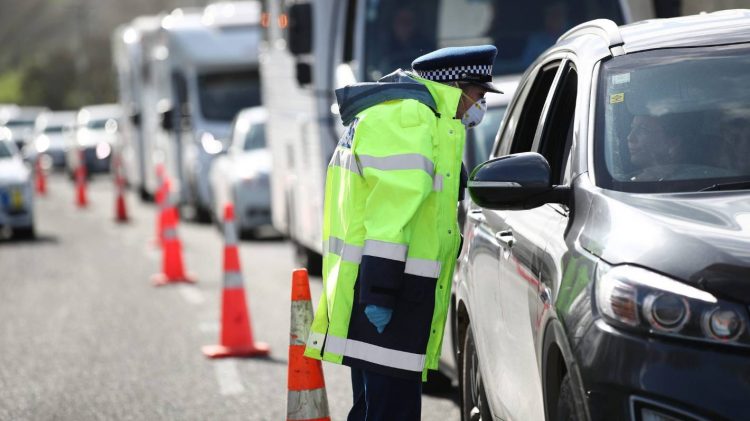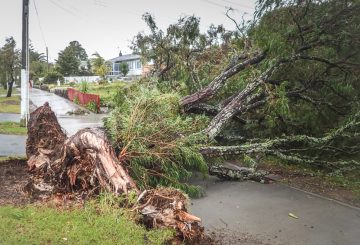警报级别边界之间的移动受到限制。有警察检查站阻止不必要的旅行。新西兰人应继续确保他们越界的行动只是为了基本目的。警报级别边界将处于不同警报级别的新西兰区域分开。员工在越过警报级别边界之前,需要出示他们最近进行过 COVID-19 测试的证据。企业需要向员工提供跨越警报级别边界的资格证明,例如 MBIE 的商务旅行登记册上生成的文件。
强制性的 COVID-19 测试
需要跨越警报级别边界的员工必须定期接受 COVID-19 测试。
在跨越边界之前,工人需要出示证明他们在过去七天内进行过测试。他们不需要出示证明自己没有 COVID-19 的证据,也不需要在旅行之前等待测试结果。
需要跨越区域边界工作的基本工人的雇主必须制定流程,以使这些员工能够接受 COVID-19 检测。有关测试地点的详细信息,请访问 Healthpoint 网站。
查找测试地点(外部链接)-Healthpoint
重新申请商务旅行证件
如果您在 2021 年 8 月或 9 月期间收到了商务旅行证件,这些证件将在证件上注明的范围内继续有效。
您将无法重复使用在之前的警报级别变更活动中(2021 年 8 月之前)申请的旅行证件,需要重新申请新证件。在 2021 年 8 月之前申请旅行证件的企业会发现,当他们登录 Business Connect 帐户时,他们的详细信息将从之前的申请中保存。企业有责任审查和更新这些信息,以确保在提交新申请之前这些信息是最新的。
跨越边界旅行
进出不同警报级别的区域受到限制。
如果您正在进行 “警报级别命令” 中列出的允许活动,则只要有证据表明自己的活动被允许,就可以跨越边界。获取正式的商务或个人旅行证件将使跨越边境的过程变得更加快捷和容易。
您也可以通过商务旅行登记册申请商务旅行豁免。豁免的门槛很高。请求必须符合标准,许多请求将不会获得批准。
重要的是要注意,只有出于特定原因并在特定参数范围内才允许旅行豁免。您必须遵守授予豁免的条件。
企业必须拥有适当的系统和流程,以最大限度地减少跨境或警报级别区域内区域之间的旅行。如果可以,每个人都应该远程办公。穿越警报级别边界的旅行将非常有限。当我们降低警报级别时,维护公共卫生至关重要。
重要链接:
申请商务旅行证件(外部链接)— 商务连接
有关新西兰当前警报级别和边界的地图,请访问联合抗击 COVID-19 网站。
新西兰警报级别边界地图(外部链接)— covid19.govt.nz
跨警报级别边界的商务旅行(外部链接)— covid19.govt.nz
个人旅行
如果您的申请涉及个人或个人旅行,则将由卫生部处理。
跨警报级别边界的个人旅行(外部链接)— covid19.govt.nz
在开始商务旅行申请之前
为您的企业指定授权人员。此人应代表您的企业提出申请。此人应该对企业的旅行业务有很好的了解,例如谁可能需要旅行,他们需要跨越哪些边界(如果有多个边界),以及为什么需要旅行。这可能是企业所有者、经理或管理员。
员工不能自行注册。如果员工需要跨境旅行(要么是上下班上下班,要么出差从事该工作),则企业的单一授权人员应代表他们提出申请。
确保授权人员知道其申请中的员工将属于哪个业务类别 —— 他们在申请时需要这些信息。
登录 Business Connect 后,您可以选择一系列类别。每个类别都有一个子类别列表可供选择。如果您的企业不属于这些类别之一,并且您认为您或您的员工急需旅行,则您的授权人员可以通过选择 “特殊情况下的豁免” 选项来申请豁免。卫生总干事将考虑这一点。
确保员工在打算越过警报级别边界之前不超过 7 天接受 COVID-19 测试。如果未对工作人员进行测试,则不能要求他们穿越边界。
旅行类型
在您的请求中,系统会询问您的员工将进行哪种类型的旅行。列出了六种不同的类型,请确保您知道它们之间的区别并申请正确的类型。
- 过境
如果工作人员需要通过限制区域才能提供服务。例如,如果旅程涉及穿越警报级别高于起始地点和前往地点的区域,那么这将是一个中转请求。通过警报级别边界的工作人员在另一个警报级别区域时应直接旅行而不会停下来。
- 单次往返
如果工作人员需要跨越边界进行一次性服务,然后将返回。
- 单程走出警报级别较高的区域
如果工作人员只需要跨越边界一次,而他们正在进入较低的警报级别。例如,如果他们在复活期间从警报级别 4 区域重新定位到警报级别 3 区域。
- 单程进入更高警戒级别的区域
如果工作人员只需要跨越边界一次,而他们正在前往更高的警报级别区域。例如,如果他们在复活期间从警报级别 3 区域重新定位到警报等级 4 区域。
- 多次出差
作为工作的一部分,需要多次跨越边界的企业或组织。
- 工人上下班
提供服务的企业或组织有以下两种情况:对运营至关重要的关键员工,需要通勤才能跨界工作;或者为确保有最少的员工可用于运营,需要相当一部分员工跨越边界通勤。
如何注册
在商务互联上申请商务旅行证件。您可以使用现有的商务联系帐户,也可以创建一个新账户。
你需要申请什么:
- 每位员工将前往和/或出发的地点的实际地址,以便您可以根据员工的工作地点对员工进行分组。
- 您申请的旅行类别,同时简要说明您的业务运营如何适应该类别以及为什么需要此旅行。
- 您或您的员工可能需要穿越的边界(如果有多个边界)。
- 工作人员需要进行的旅行类型(有关旅行类型,请参阅上文)。
您
- 要为其申请文件的所有工作人员的姓名。如果需要旅行,请确保包括自己的详细信息以及工作人员的详细信息。
提交请求后,您将收到一封自动电子邮件,说明您的请求已收到。如果需要任何其他信息来支持您的请求,也会向您发送电子邮件。
申请商务旅行证件(外部链接)— 商务连接
获取你的文件
您将通过电子邮件收到申请结果的电子邮件。如果成功,您的商务旅行证件将可通过您的商务连接个人资料下载。
在警报级别边界,警察可能会根据您的证件核实您的旅行原因,因此请务必确保在填写表格时提供准确的信息。
每个人的文件将包括:
- 他们的名字和证件号码
- 商家详情和业务类别
- 旅行的原因
- 他们可以穿越的旅行类型和边界
- 边境官员在越过边界时将扫描的二维码。
使用商务旅行证件跨越警报级别边界
建议您打印文档(但电子版本也可以使用)。车辆驾驶员应在仪表板上显示他们的文件,以便边境官员可以看到。
车内的每个人都需要随身携带文件,这可以是实物打印副本或智能手机上。每个人都需要能够向边境官员出示他们的证件。如果你的车内有人没有证件,他们将需要提供其他证据证明他们有资格越过警报级别边界,否则他们可能会被转身。
除了携带证据证明你的企业被允许跨越边界之外,你的企业还必须确保你的员工在打算跨越警报级别边界之前不超过 7 天接受 COVID-19 检测。如果未对工作人员进行测试,则不能要求他们穿越边界。





























































